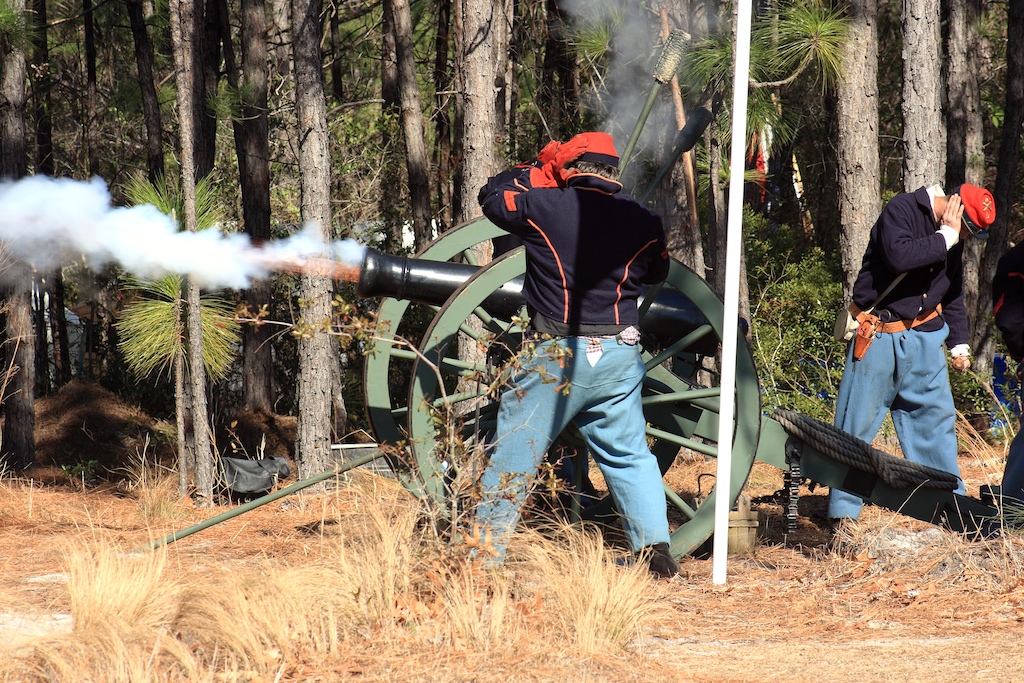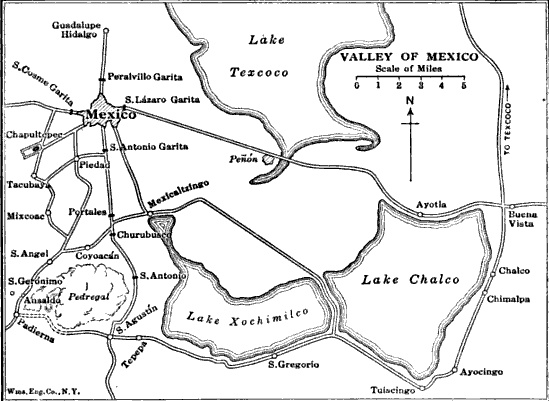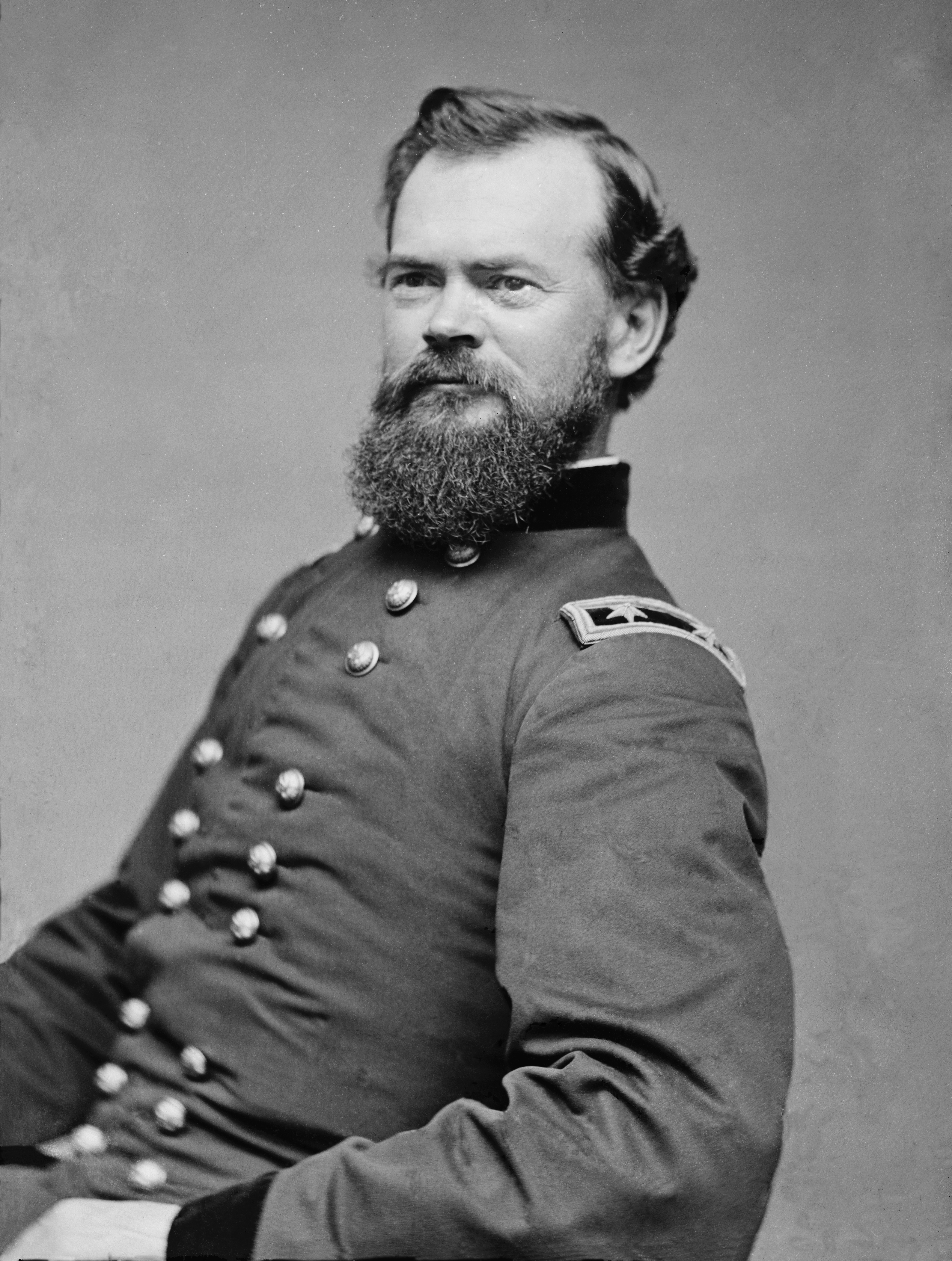|
William W. Loring
William Wing Loring (December 4, 1818 – December 30, 1886) was an American soldier, politician, and lawyer. His military career spanned fifty years and saw him serve in the armies of the United States, the Confederate States, and the Khedivate of Egypt. He was a veteran of the Mexican-American War and was one of the youngest colonels in the U.S. Army at the time before resigning his commission to serve in the Confederate Army during the Civil War. Loring, along with other Civil War veterans, travelled to Egypt in an effort to modernize the country's military where he was given the rank of Fereek Pasha (Major General). Early life William was born in Wilmington, North Carolina to Reuben Loring and Hannah Kenan Loring. His mother was from a prominent North Carolina family and through his father, he was a fifth great-grandson of Plymouth Colony pioneer Deacon Thomas Loring. When he was four, his family moved to Saint Augustine, Florida. Here, his father worked as builder, ... [...More Info...] [...Related Items...] OR: [Wikipedia] [Google] [Baidu] |
Wilmington, North Carolina
Wilmington is a port city in New Hanover County, North Carolina, United States. With a population of 115,451 as of the 2020 United States census, 2020 census, it is the List of municipalities in North Carolina, eighth-most populous city in the state. The county seat of New Hanover County, it is the principal city of the Cape Fear (region), Wilmington metropolitan area, which includes New Hanover, Brunswick County, North Carolina, Brunswick, and Pender County, North Carolina, Pender counties. As of 2023, the region had an estimated population of 467,337. Wilmington's residential area lies between the Cape Fear River and the Atlantic Ocean, and the city developed as a commercial port in the colonial era. Toward the end of the 19th century, Wilmington was a majority-black, racially integrated, prosperous cityand the largest in North Carolina. It suffered what became known as the Wilmington massacre in 1898 when white supremacists launched a Coup d'état, coup that overthrew the legit ... [...More Info...] [...Related Items...] OR: [Wikipedia] [Google] [Baidu] |
Battle Of Churubusco
The Battle of Churubusco took place on August 20, 1847, while Santa Anna's army was in retreat from the Battle of Contreras or Battle of Padierna during the Mexican–American War. It was the battle where the San Patricio Battalion, made up largely of US deserters, made their last stand against U.S. forces. The U.S. Army was victorious, outnumbering more than six-to-one the defending Mexican troops. After the battle, the U.S. Army was only 5 miles (8 km) away from Mexico City. 50 Saint Patrick's Battalion members were officially executed by the U.S. Army, all but two by hanging. Collectively, this was the largest mass execution in United States history. Background Following their defeats at Contreras, Antonio López de Santa Anna ordered Major General Nicolás Bravo Rueda with the Army of the Center, to retreat from San Antonio to Churubusco.Bauer, K.J., 1974, ''The Mexican War, 1846-1848'', New York:Macmillan, Santa Anna also ordered Major General Manuel Rincón t ... [...More Info...] [...Related Items...] OR: [Wikipedia] [Google] [Baidu] |
Battle Of Lovejoy's Station
The Battle of Lovejoy's Station was fought on August 20, 1864, near what is now Lovejoy, Georgia, in Clayton County, Georgia, Clayton County, during the Atlanta Campaign of the American Civil War. The two sides had arrived at something of a stalemate, with the Union Army, Union army half-encircling Atlanta and the Confederate States Army, Confederate defenders staying behind their fortifications. The battle While Confederate Cavalry commander Maj. Gen. Joseph Wheeler was absent, raiding Union supply lines from North Georgia to East Tennessee, Union Army commander Major General William T. Sherman sent cavalry Brigadier General Judson Kilpatrick to raid Confederate supply lines. Leaving on August 18, Kilpatrick hit the Atlanta & West Point Railroad that evening and disabled a small area of the track. Next, he proceeded for Lovejoy's Station on the Macon & Western Railroad. In transit, on August 19, Kilpatrick's men attacked the Jonesborough supply depot on the Macon & Western Rail ... [...More Info...] [...Related Items...] OR: [Wikipedia] [Google] [Baidu] |
Battle Of Ezra Church
The Battle of Ezra Church (July 28, 1864), also known as the Battle of Ezra Chapel and the Battle of the Poor House saw Union Army forces under Major General William T. Sherman fight Confederate States Army troops led by Lieutenant General John B. Hood in Fulton County, Georgia during the Atlanta campaign in the American Civil War. Sherman sent Oliver Otis Howard's Union Army of the Tennessee circling around the west side of Atlanta with the purpose of cutting the Macon and Western Railroad. Hood countered the move by sending two corps commanded by Stephen D. Lee and Alexander P. Stewart to block the move. Before Howard's troops reached the railroad, the Confederates launched several attacks on them that were repulsed with heavy losses. Despite the tactical defeat, the Confederates prevented their foes from blocking the railroad. From May to July 1864, Sherman's numerically superior Union forces pressed back their Confederate opponents to the outskirts of Atlanta. Dissati ... [...More Info...] [...Related Items...] OR: [Wikipedia] [Google] [Baidu] |
Battle Of Peachtree Creek
The Battle of Peachtree Creek was fought in Georgia (U.S. state), Georgia on July 20, 1864, as part of the Atlanta Campaign in the American Civil War. It was the first major attack by Lieutenant General, Lt. Gen. John Bell Hood since taking command of the Confederate Army of Tennessee. The attack was against Major General#United States, Maj. Gen. William T. Sherman's Union Army, Union army, which was perched on the doorstep of Atlanta, Georgia, Atlanta. The main armies in the conflict were the Union Army of the Cumberland, commanded by Maj. Gen. George Henry Thomas and two corps of the Confederate Army of Tennessee. Background Sherman had launched his grand offensive against the Army of Tennessee in early May. For more than two months, Sherman's forces, consisting of the Army of the Cumberland, the Army of the Tennessee and the Army of the Ohio, sparred with the Confederate Army of Tennessee, then under the command of General Joseph E. Johnston. Although the Southerners gained ... [...More Info...] [...Related Items...] OR: [Wikipedia] [Google] [Baidu] |
Battle Of Kennesaw Mountain
The Battle of Kennesaw Mountain was fought on June 27, 1864, during the Atlanta Campaign of the American Civil War. The most significant frontal assault launched by Union Army, Union Major general (United States), Major General William T. Sherman against the Confederate States Army, Confederate Army of Tennessee under General Joseph E. Johnston, it produced a tactical defeat for the Union forces but failed to deliver the result that the Confederacy desperately needed: a halt to Sherman's advance on Atlanta, Georgia. Sherman's 1864 campaign against Atlanta began with a series of flanking maneuvers that compelled Johnston's forces to withdraw from heavily fortified positions with minimal casualties on either side. After two months and of such maneuvering, Sherman's path was blocked by imposing fortifications on Kennesaw Mountain, near Marietta, Georgia. The Union general chose to change his tactics and ordered a large-scale frontal assault on June 27. Major General James B. McPhers ... [...More Info...] [...Related Items...] OR: [Wikipedia] [Google] [Baidu] |
Battle Of New Hope Church
The Battle of New Hope Church (May 25–26, 1864) was a clash between the Union Army under Major General William T. Sherman and the Confederate Army of Tennessee led by General Joseph E. Johnston during the Atlanta Campaign of the American Civil War. Sherman broke loose from his railroad supply line in a large-scale sweep in an attempt to force Johnston's army to retreat from its strong position south of the Etowah River. Sherman hoped that he had outmaneuvered his opponent, but Johnston rapidly shifted his army to the southwest. When the Union XX Corps under Major General Joseph Hooker tried to force its way through the Confederate lines at New Hope Church, its soldiers were stopped with heavy losses. Earlier in May, Sherman successfully maneuvered Johnston's army into retreating from three separate defensive positions. However, when Sherman's army crossed the Etowah River and attempted to move around Johnston's left flank, the Confederate general anticipated his opponent' ... [...More Info...] [...Related Items...] OR: [Wikipedia] [Google] [Baidu] |
Battle Of Resaca
The Battle of Resaca, from May 13 to 15, 1864, formed part of the Atlanta Campaign during the American Civil War, when a Union force under William Tecumseh Sherman engaged the Confederate Army of Tennessee led by Joseph E. Johnston. The battle was fought in Gordon and Whitfield Counties, Georgia, and is generally viewed as inconclusive. The campaign began with Johnston holding strong defensive positions at Buzzard's Roost Gap and Rocky Face Ridge, which he hoped Sherman would assault. He was compelled to abandon Dalton when the Union Army of the Tennessee under James B. McPherson seized the unguarded Snake Creek Gap on May 8, threatening Resaca from the west. Johnston retreated to Resaca where he was joined by reinforcements gathering there; he was pursued by Sherman, most of whose forces followed McPherson through Snake Creek Gap, while others came south down the Western and Atlantic Railroad. On May 14, Sherman gained a foothold west of Resaca but an attack on Confedera ... [...More Info...] [...Related Items...] OR: [Wikipedia] [Google] [Baidu] |
Battle Of Champion Hill
The Battle of Champion Hill (aka Champion's Hill) of May 16, 1863, was the pivotal battle in the Vicksburg Campaign of the American Civil War (1861–1865). Union Army commander Major General Ulysses S. Grant and the Army of the Tennessee pursued the retreating Confederate States Army under Lieutenant General John C. Pemberton and defeated it twenty miles to the east of Vicksburg, Mississippi, leading inevitably to the Siege of Vicksburg and surrender. The battle is also known as Baker's Creek. Sidney S. Champion, born in Guilford County, North Carolina, in 1824, came to Mississippi and settled on a large tract of land located between Bolton and Edwards. Captain Champion was a seasoned Confederate soldier long before the outbreak of the Battle of Champion Hill. The night of May 15 found Captain Champion within range of the battle site and serving as a vital member of General Pemberton's staff. Background Following the Union occupation of Jackson, Mississippi, on M ... [...More Info...] [...Related Items...] OR: [Wikipedia] [Google] [Baidu] |
Vicksburg Campaign
The Vicksburg campaigns were a series of maneuvers and battles in the Western Theater of the American Civil War directed against Vicksburg, Mississippi, a fortress city that dominated the last Confederate-controlled section of the Mississippi River. The Union Army of the Tennessee under Major General Ulysses S. Grant gained control of the river by capturing this stronghold and defeating Lieutenant General John C. Pemberton's forces stationed there. The campaign consisted of many important naval operations, troop maneuvers, failed initiatives, and eleven distinct battles from December 26, 1862, to July 4, 1863. Military historians divide the campaign into two formal phases: operations against Vicksburg (December 1862 – January 1863) and Grant's operations against Vicksburg (March–July 1863). Grant initially planned a two-pronged approach in which half of his army, under Maj. Gen. William Tecumseh Sherman, would advance to the Yazoo River and attempt to reach Vicksburg ... [...More Info...] [...Related Items...] OR: [Wikipedia] [Google] [Baidu] |
Western Virginia Campaign
The western Virginia campaign, also known as operations in western Virginia or the Rich Mountain campaign, occurred from May to December 1861 during the American Civil War. Union forces under Major General George B. McClellan invaded the western portion of Virginia to prevent Confederate occupation; this area later became the state of West Virginia. West Virginians on both sides would fight in the campaign while a Unionist convention in Wheeling would appoint their choice for a Unionist governor for Virginia, Francis H. Pierpont, and promote the creation of a new state in western Virginia. Large scale Confederate forces would gradually abandon the region, leaving it to small local brigades to maintain hold on southern and eastern sections for much of the war. Western Virginia was an important source of minerals the Confederates needed for the production of arms and ammunition. It also contained several roads and turnpikes which would grant the Union access to Tennessee, North ... [...More Info...] [...Related Items...] OR: [Wikipedia] [Google] [Baidu] |










